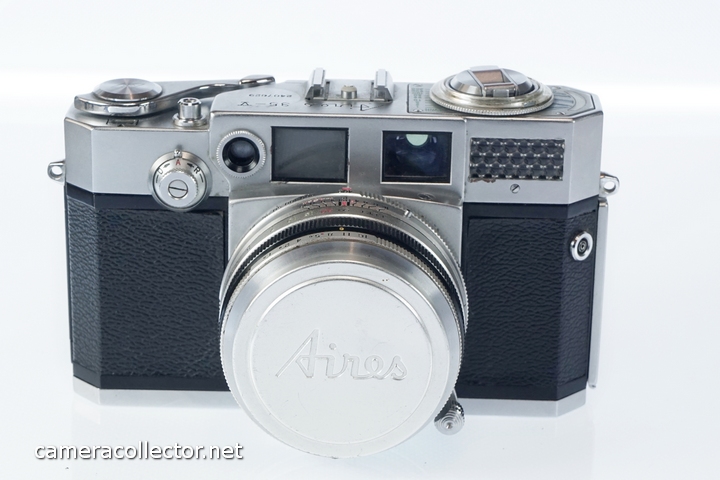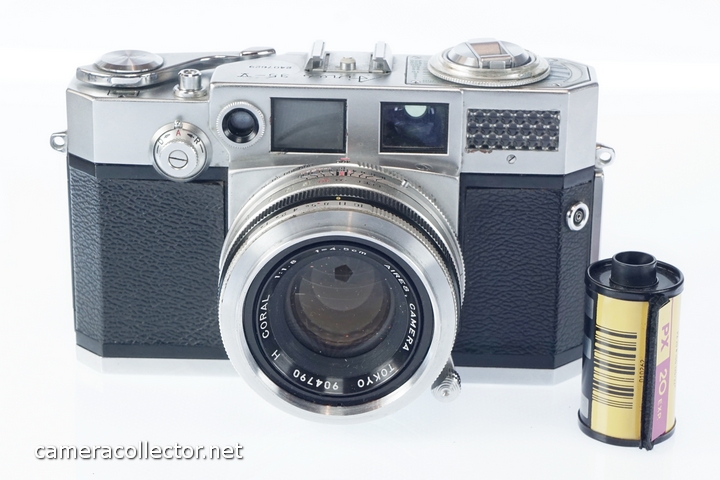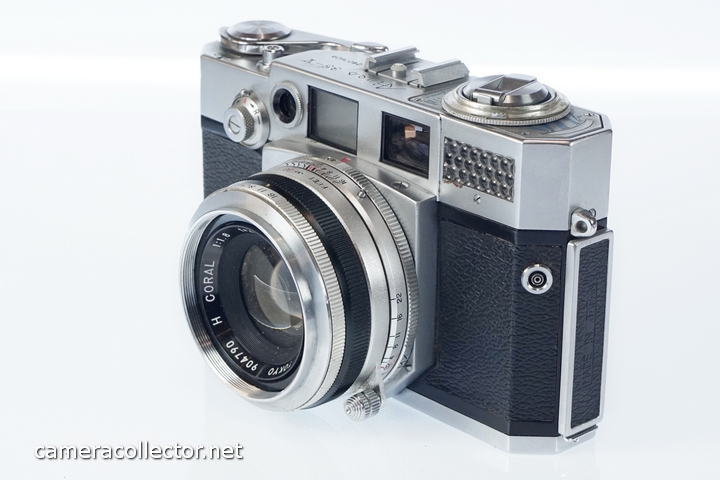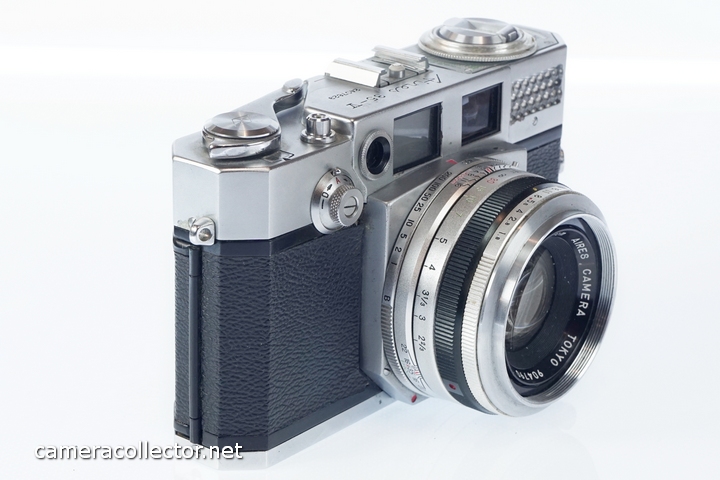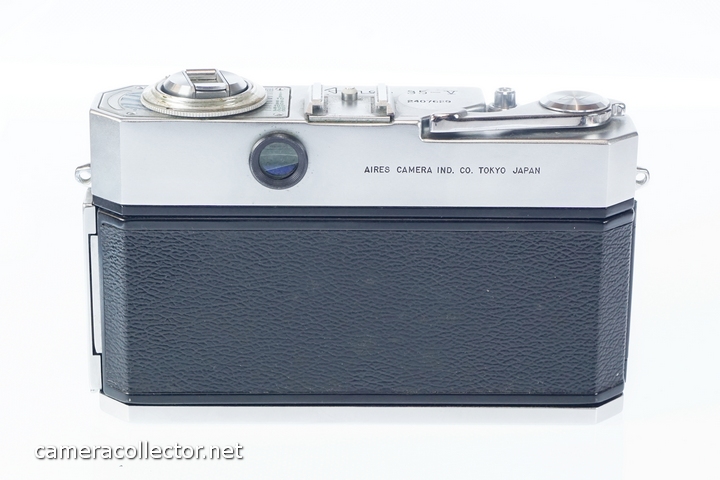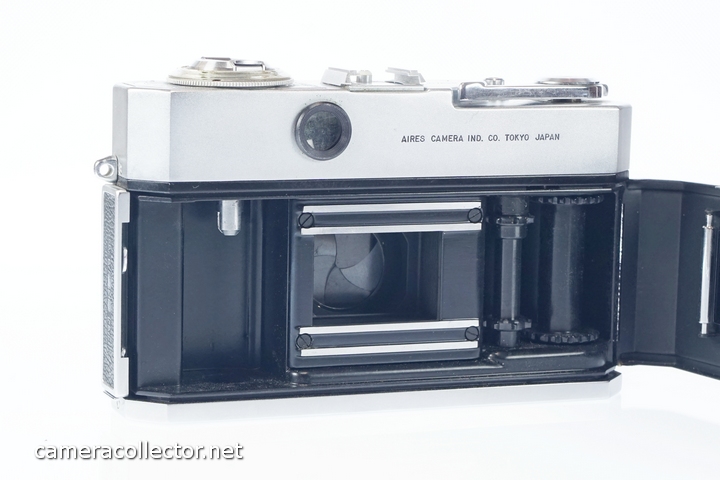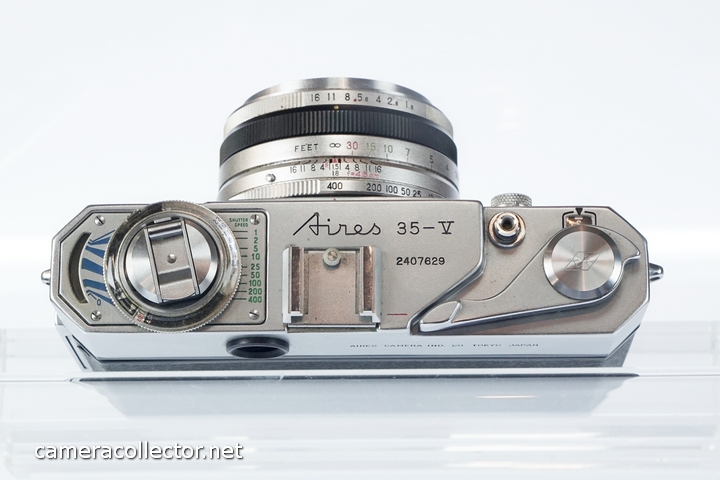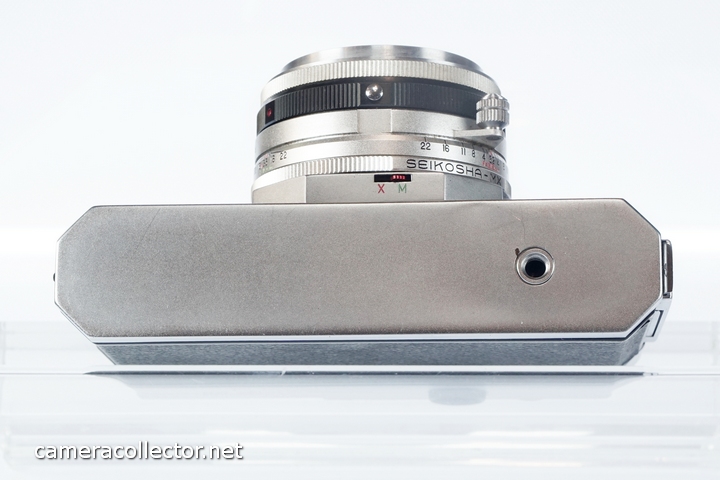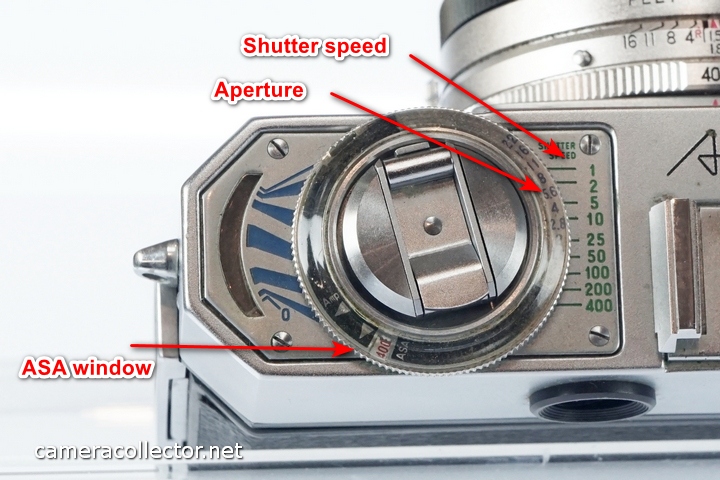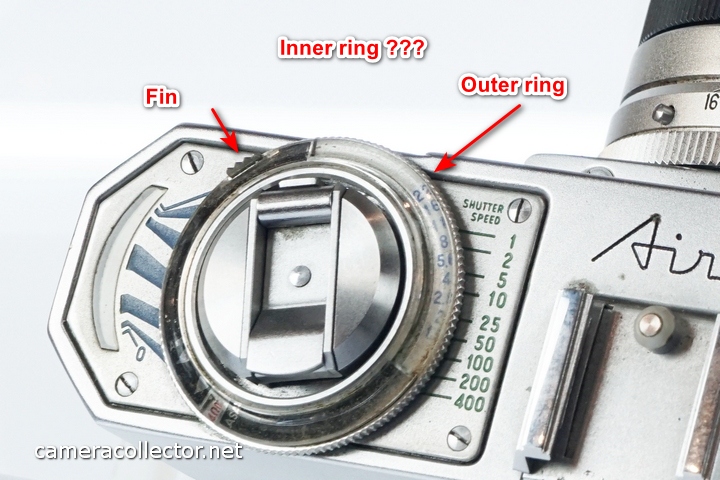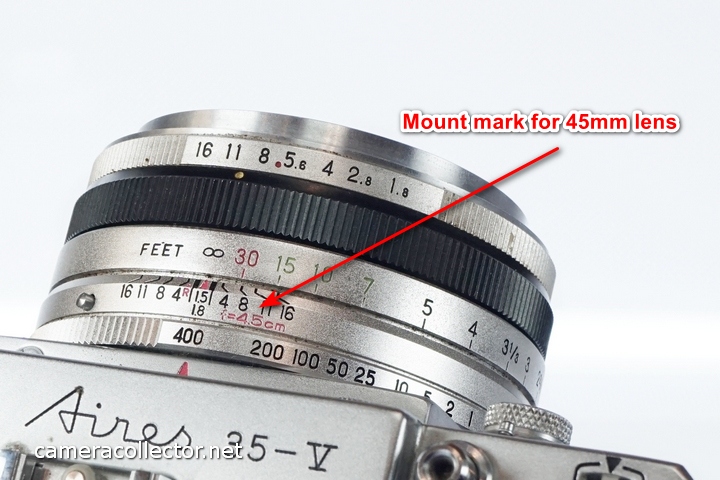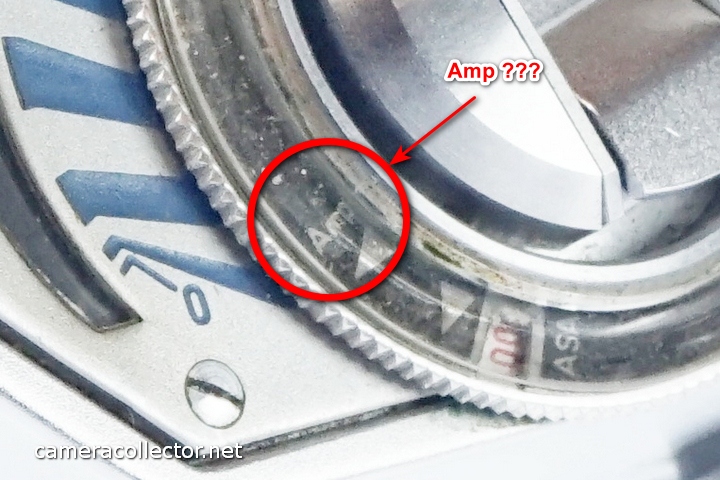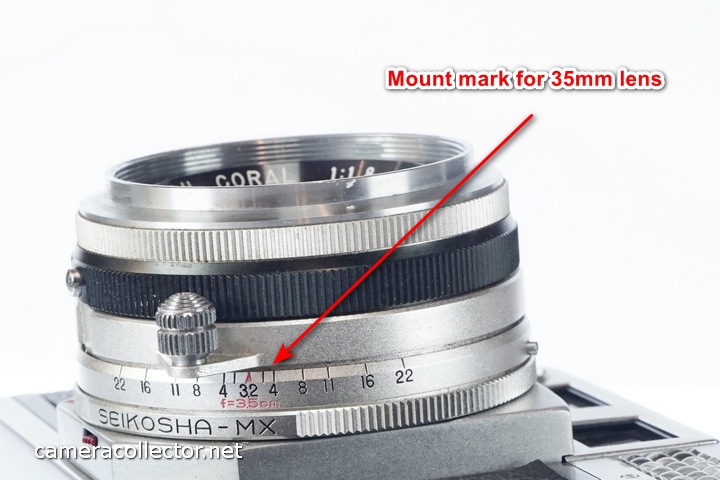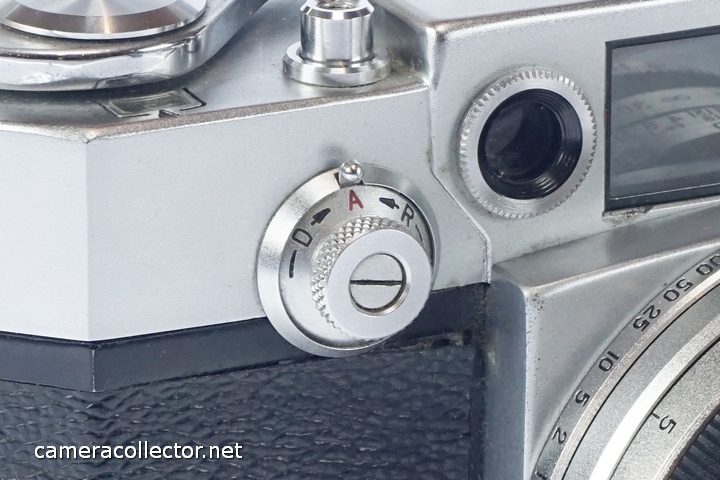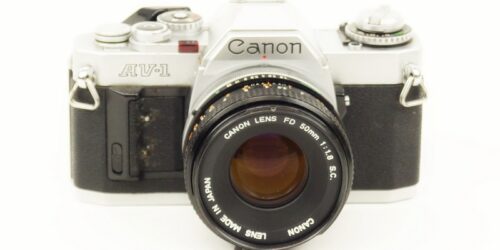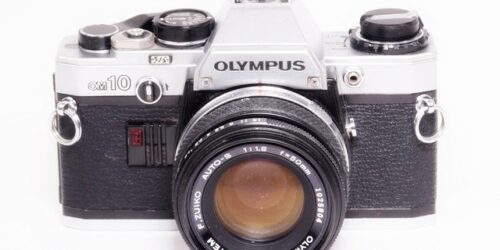Aires rangefinder cameras
Aires rangefinder cameras
Aires rangefinders list
Aires 25-III
Aires 35-V
Images
Aires cameras can be grouped into three categories: the early TLR, then rangefinders and lastly SLR models. Here, I look at the rangefinders group.
Aires lasted for just over a decade, but in this short time, they offered an impressive array of cameras, or did they? A close look at the models reveals that while other brands retained the exact model name with changes in lens and shutter combinations, Aires renamed such a combination as a unique model.
- The rangefinder group began with an exception, being a viewfinder, but I will keep it included. The Aires 35 AKA 35-I was a no-pretensions camera, featuring a modest lens and with B and 1-500 speeds, which remained the standard on all other models, except for the Radar-Eye and the 35-III.
- Next came the 35-II and IIA, similar models but with different shutter and lens combinations. Three front windows offered a well-lit parallax frame, a fresh idea at the time.
- The I and II modes gained a sorry reputation due to early mechanical failures.
- The 35-III followed, adding a lever winder and supposedly tighter quality control. Offered with suffixes A, B, C, and L, these models were similar, featuring a mix of shutter and lens options. The L model had a coupled shutter and aperture for easy LV setting. 35-IIIS added an uncoupled selenium meter. The 35-IIISA was a step-back model, similar to the IIIS but without a meter. The C had a self-timer.
- The 35-V signified the direction Aires designers had in mind for the future, adding an interchangeable lens system with a proprietary mount and choice of three lenses. All that was packed in a larger body. Selenium meter still uncoupled.
- The last models sold under the Viscount name were available in 1.9 and 2.8 flavours. Modestly priced, these models aimed at the lower end of the market, with the hope of saving the company’s declining fortunes. The 2.8 added a selenium meter and was also sold as Aires M28.
- The last in the Aires rangefinders dynasty was the Radar-Eye, a revised 35-V, with a fixed lens. It was either the company’s swan song or put together by the undertakers after Aires was shut down; there is mixed information about it.
I follow sales numbers through camdex.ca, but with this brand, it isn’t easy to gather a meaningful perspective. There are hardly any sales recorded for the early 35-II variants. It could be either that only a few were sold in the US, or that there are no buyers today. Aires did not sell in Europe, so I assume that early models were solely sold in Japan, with later models imported to the US. The 35-III I have is marked <E-P>, meaning it was sold through the US commissary stores in Japan.
Aires 35mm rangefinders list
| Model | Year | Lens | Shutter | Speeds | Notes |
| 35 I | 1954 | Coral 3.5/45 | Seiko Rapid | B, 1-500 | Viewfinder |
| 35 II | 1954 | Coral 3.2/45 | Seiko Rapid | B, 1-500 | |
| 35 IIA | 1955 | Coral 2.8/50 | Seiko MX | B, 1-500 | |
| 35 III | 1955 | Coral 2.0/45 | Seiko MX | B, 1-500 | |
| 35 IIIA | 1955 | Coral 2.8/50 | Seiko MXL | B, 1-500 | |
| 35 IIIB | 1957 | Coral 3.2/45 | Seiko MXL | B, 1-500 | |
| 35 IIIC | 1958 | Coral 1.9/45 | Seiko LSV | B, 1-500 | |
| 35 IIIL | 1957 | Coral 1.9/45 | Seiko MXL | B, 1-500 | Coupled shutter/aperture |
| 35 IIIS | 1958 | Coral 1.8/45 | Seiko SVL | B, 1-500 | Selenium meter |
| 35 IIISA | 1959 | Coral 1.8/45 | Seiko SLV | B, 1-500 | |
| 35-V | 1958 | Coral 1.8/45 | Seiko MX | B, 1-400 | Selenium meter, interchangeable lens |
| M28 | 1960 | Coral 2.8/45 | Seiko SLV | B, 1-500 | Selenium, also Viscount M28 |
| Radar-Eye | 1960 | Coral 1.9/45 | Seiko SLS | B, 1-1000 | Selenium meter |
| Viscount 2.8 | 1959 | Coral 2.8/45 | Seiko SLV | B, 1-500 | |
| Viscount 1.9 | 1959 | Coral 1.9/50 | Seiko SLV | B, 1-500 |
Aires 35 III
The first Aires rangefinder, the 35-II, was presumably sold only in Japan, targeting the GI contingent there. Through that, they built some brand recognition, upon which they hoped to enter the US market. Mechanical issues plagued the 35-II, so the company offered a revised model, the 35-III, and its variants. I do not have a 35-II to compare, but from what I see, the noticeable changes were the lever winder and a faster lens. The 35-III variants were essentially the same, with minor changes on the fringes. It appears that Aires attempted to position itself against the Germans in terms of style, feel, and quality, but somehow fell short of the mark.
- The camera body is on the large side and heavier than it is expected. At 805 gr, it is more than the 640 gr class average . One can associate weight and heft with quality, which could be true, discounting the Soviet and East German of the time. It appears well-built, but the finishes have not withstood the test of time. I’ve seen 70-year-old cameras in much better condition. Notwithstanding that, on the mechanical side, all settings function, which is a badge of honour.
- The top is pretty busy and not as refined as the other classics.
- The lever winder looks as if it came out of a ploughsmith shop. It has a 180° swing, pulling against strong resistance.
- A self-reset frame counter is next to it, in a large bubble.
- At the other side is the rewind knob skirted with a film speed and type memo table, with an empty mark for good measure.
- The unit on my bench is marked <E-P>, indicating it was sold in Japan at the military commissary stores.
- The viewer is large but dim, perhaps due to age. A fixed parallax frame is well-defined, but not so the focusing patch, which is tiny and vague.
- The hinged back opens via a side-mounted sliding lock, which is a breeze to open compared to, say, the Konica EE-Matic. The bolt does not click back into the lock position; it requires a push to lock.
- Inside is a typical Japanese film chamber, featuring a machined film track, double film path cogs, with a back-mounted pressure plate and a roller guide. The offtake drum could be larger.
- The three front windows do resemble the Leica style, but so did most camera makers of the time. The milky window in the middle hosts the parallax frame.
- The lens assembly holds the camera settings:
- Closest to the body is the focusing ring, marked feet, with an odd dispersal, down to a fraction of a foot. The markings are minuscule; I had to wear reading glasses to decipher them. A long travel makes it easy to focus. On the depth of field scale, there is a hardly legible red ‘R’ mark, for infrared film. I don’t think it is practical today, but if you find such a film, focus normally and then set the read value to this ‘R’,
- Next is the aperture setting dial. Easy to grip, but with similar-sized markings to those on the focusing dial. Between the f/5.6 and f/8 stops is a red dot; there is no reference to it in the manual. Suggestions are welcome.
- On the fixed ring next to the aperture dial are the sync port and sync selector, M/F/X.
- The shutter speed is at the front end, a good offering at the time, B, 1-400. Other Aires 35 cameras offered a 500 top shutter speed.
- The kit lens is 1.9/45, which is decent even by today’s standards. The glass is marked as Coral, made by Aires’s subsidiary.
Aires 35 V
In its last meaningful attempt to punch above its weight, Aires offered the 35-V, which sold as many as the 35 III. Here, they added all that could sustain them in the major league. The front windows style is inspired by the Leica III, and they also mounted a dial similar to the Leica slow-speed selector at the exact location. A light meter was a good addition, but it was already seen on the Aires 35-L. An interchangeable lens system could have been a game changer, but as with the Finetta and other minor makers, they opted for a proprietary mount. Having high hopes and a vision was not enough to lure followers to a system of a meagre three lenses. A standard 39mm or 42mm thread mount could have offered comfort to prospective users. Furthermore, where thread or most bayonet mounts were easy to use, this one required finger agility and, worst of all, reading the manual.
- The body borrows much from the earlier 35-III, but is larger and at 870 gr heavier than the 35-III. Just three years younger than the 35-III, the 35-V I have is better preserved than the latter. It could be either better made or the first user was kinder to it.
- On the Top are:
- A better styled and finished lever winder, and a shorter travel than the 35-III.
- A self-reset frame counter.
- An accessory shoe features an ‘Amplifier cell s electrical connection’ (sic), which I am not sure about.
- On the other side, a mighty fold-in rewind crank, surrounded by a film speed selector showing the ASA value in red, within a miniature window at one side, and f values in blue at he other side.
- To set the film speed, I quote the manual: “Hold only the ASA and Aperture dial (knurled lower metal ring) with your left hand fingers and turn the small knob until the ASA number (in case ASA 100 film to 100) appears in the ASA window”. It sounds simple, but I cannot find ‘the small knob’. There is a fingernail-accessible fin on the outer ring, but it appears to be for disassembling the parts. See image below.
- On that dial, there are some markings in white over the black part. If for the 35-III I needed reading glasses, here it takes a magnifying glass. Armed with one, I could see two arrow heads and the letters’ A mp’.
- On the right of the dial is a shutter speed table in green. At the left is the light meter needle lens. Point the camera towards the subject, match the desired f-value with the shutter speed, and adjust the blue/green settings. Watch the meter needle. Adjust the aperture and the shutter as needed.
- The viewer is large but dim, as with the 35III; it might be due to age. There are two fixed parallax frames. The inner one is for a tele lens, the outer one is for the kit lens, and the entire viewer is for the wide lens. The rangefinder patch is smallish and indistinct.
- The back opens with a spring-loaded side bolt. It locks in place once the back closes.
- The inside compartment is similar to the 35III, a typical Japanese film chamber, featuring a machined film track, double film path cogs, a back-mounted pressure plate and a roller guide. The takeoff drum could be larger.
- The front has a three-window arrangement: the viewer window, a milky window for the parralax frame and a round window for the rangefinder patch.
- The meter lens presides by the viere window.
- A round dial is where Leica had the slow-speed dial. Here it has three positions: a red ‘A’ for advance, say normal use, a ‘D’ for double take on the same frame, and an ‘R’ for rewind.
- The lens assembly is a busy place.
- The camera features an interchangeable lens system, but it is somewhat intricate. Where a common bayonet mount disengages with a turn of a ring, not to mention a thread mount, here Aires had outdone themselves.
- There were only three lens options: the kit lens 1.8/45, a wide 35mm, and a tele 100mm.
- To remove the lens, set the distance to infinity, press the pin under the lens barrel and turn the black ring counterclockwise.
- To mount the lens, set the distance dial to infinity, with the aperture values showing up, insert the lens base into the mount and turn the black ring clockwise.
- Above are for the kit lens. For the other two lenses, read the manual, as each has a specific locking position.
- On the lens assembly, the closest to the body is the shutter speed ring. The markings here are legible, as are the rest of the settings on the lens assembly.
- On the following fixed ring is the depth of field scale; note it is for the 45mm kit lens. There are three DOF scales on that ring. To change the DOF for any of the other lenses, press the pinhead button next to f16 and turn the dial to select the desired (tiny) red f markings.
- Next, it’s the focusing ring, marked feet. Long travel, easy to focus. As with the 35III, markings extend down to a fraction of a foot. I would assume it was initially set in meters and then transferred to feet without rounding; otherwise, it makes no sense.
- The front ring is the aperture setting dial. A red dot between 5.6 and 8 is still a mystery.
- At the bottom of the barrel is the sync toggle fin, X/M.
- The kit lens is a Coral 1.8/45 mm, made by Aires’ subsidiary.
Note that the manual is courtesy of good ole’ Mike Butkus; it is not the original but a version compiled by him. It’s possible that something slipped in during the editing.
For the collector, both models are worth their place on the shelf. Oddly, the 35-V fetches much more than its sisters, so that it could appreciate in the future. For the shooter, I would skip both.
| Camdex list number | 2723 | 2730 |
| Brand | Aires | |
| Model | Aires 35 III | Aires 35 V |
| Manual | Butkus | Butkus |
| Value | At camdex.ca | At camdex.ca |
| Format | 35mm | |
| Introduced | 1955 | 1958 |
| AKA | ||
| Country | Japan | |
| Qty made | ||
| Initial price | 100 | 130 |
| Currency | USD | USD |
| Type | Rangefinder | |
| Body material | Metal | |
| Mode | Manual | Manual, meter assist |
| Weight | 805 gr, | 870 gr, |
| Class average weight | 640 gr, | 640 gr, |
| ASA range | Memo only | 5-500 |
| Kit lens | 1.9/45 | 1,8/45 |
| Lens make | Coral | Coral |
| Filter size | 43mm | 49 mm |
| Lens mount | Fixed lens | Proprietary bayonet |
| Mount size | N/A | |
| Aperture | ||
| Shutter | Leaf | |
| Shutter make | Seikosha MX | |
| Trigger | On top | |
| Winder | Lever | |
| Shutter cocking | Winder | |
| Light meter | None | CdS, external uncoupled |
| Lock | No | |
| Speeds | B, 1-500 | B, 1-400 |
| Mirror | N/A | |
| Viewer | Coupled rangefinder | |
| DOF preview | No | |
| Exposure lock | No | |
| Exposure compensation | No | |
| Shoe | Cold | |
| External sync | X/F/M | X/M |
| Sync speed | ||
| Timer | No | |
| Battery, original | N/A | |
| Battery, replacement | N/A | |
| Battery voltage | N/A | |
| Integral flash | None | |
| Other | ||
| More | mflenses Hank Kelner Corso Polaris Mike Eckman |
|
| Service / repair links | See camerlog.com | |
Aires 35-III Images
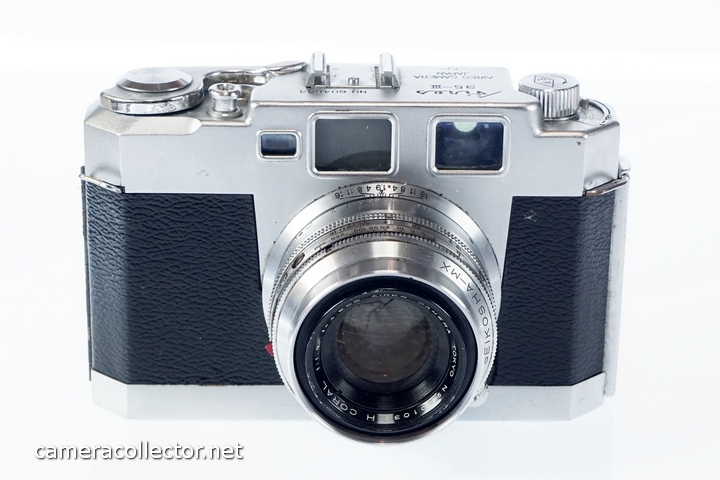
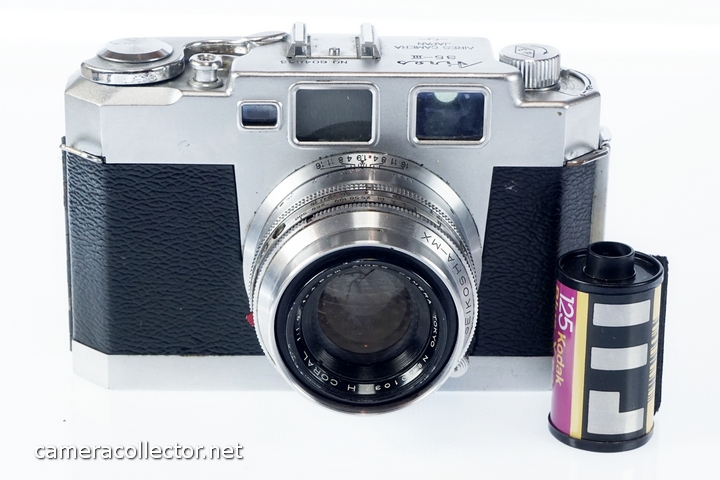
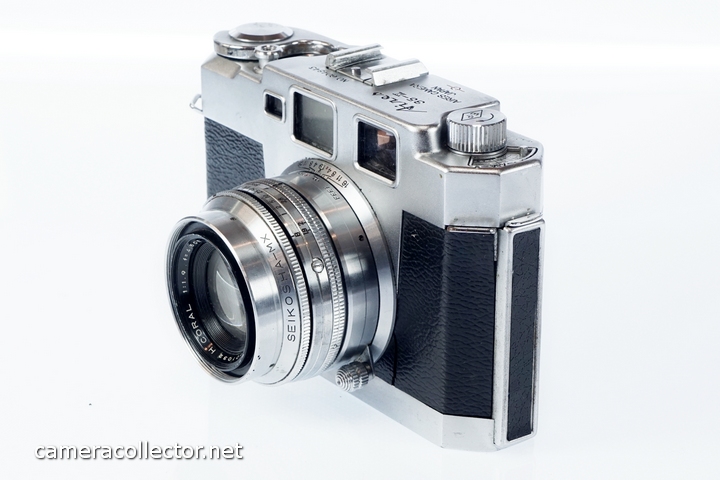
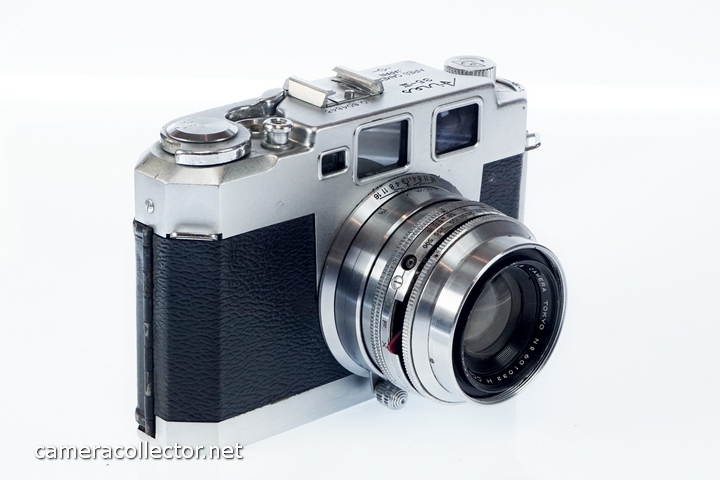
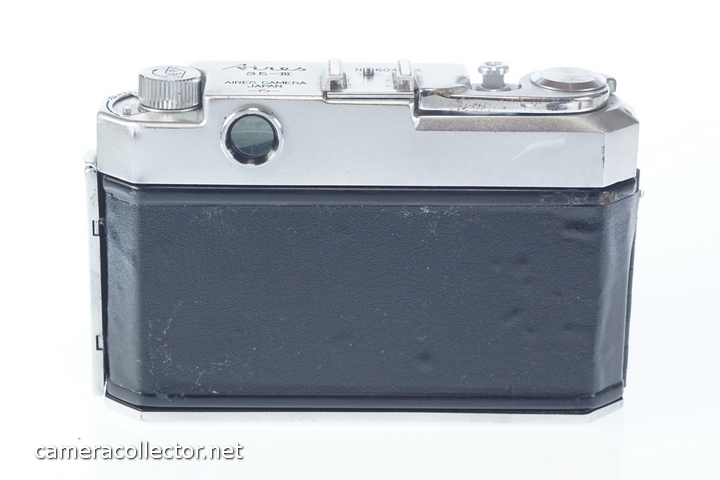
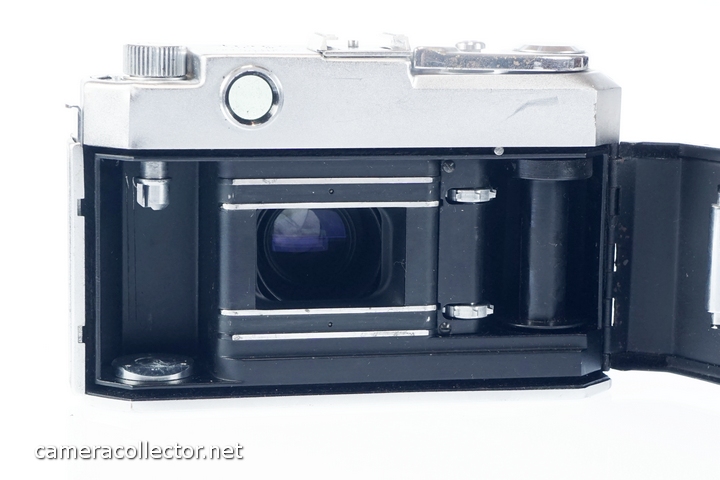
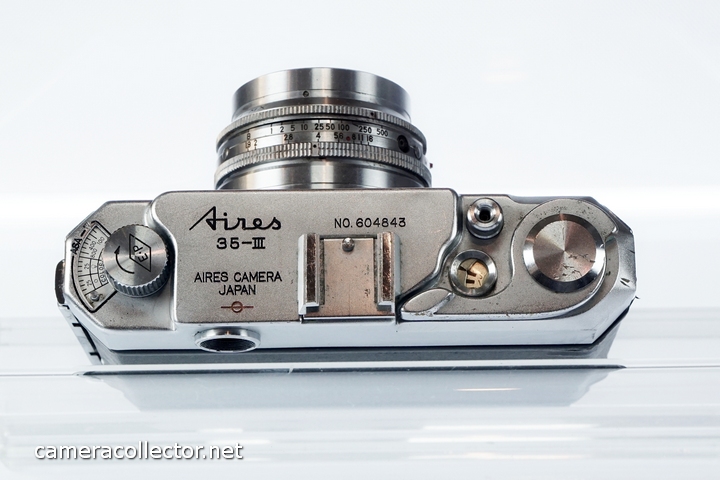
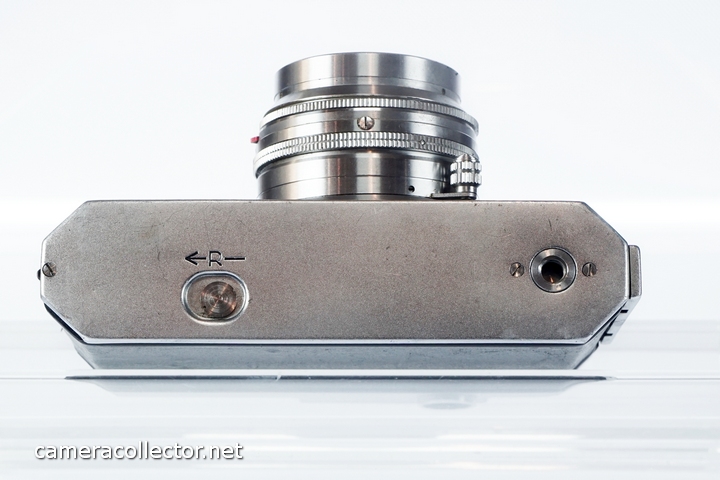
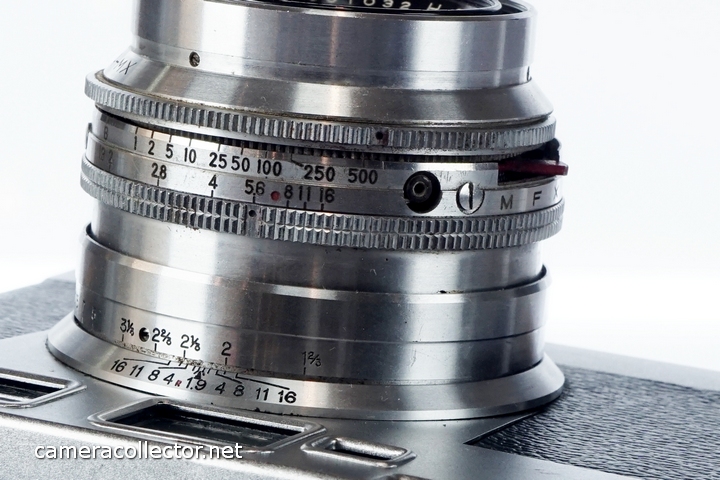
Aires 35-V Images
